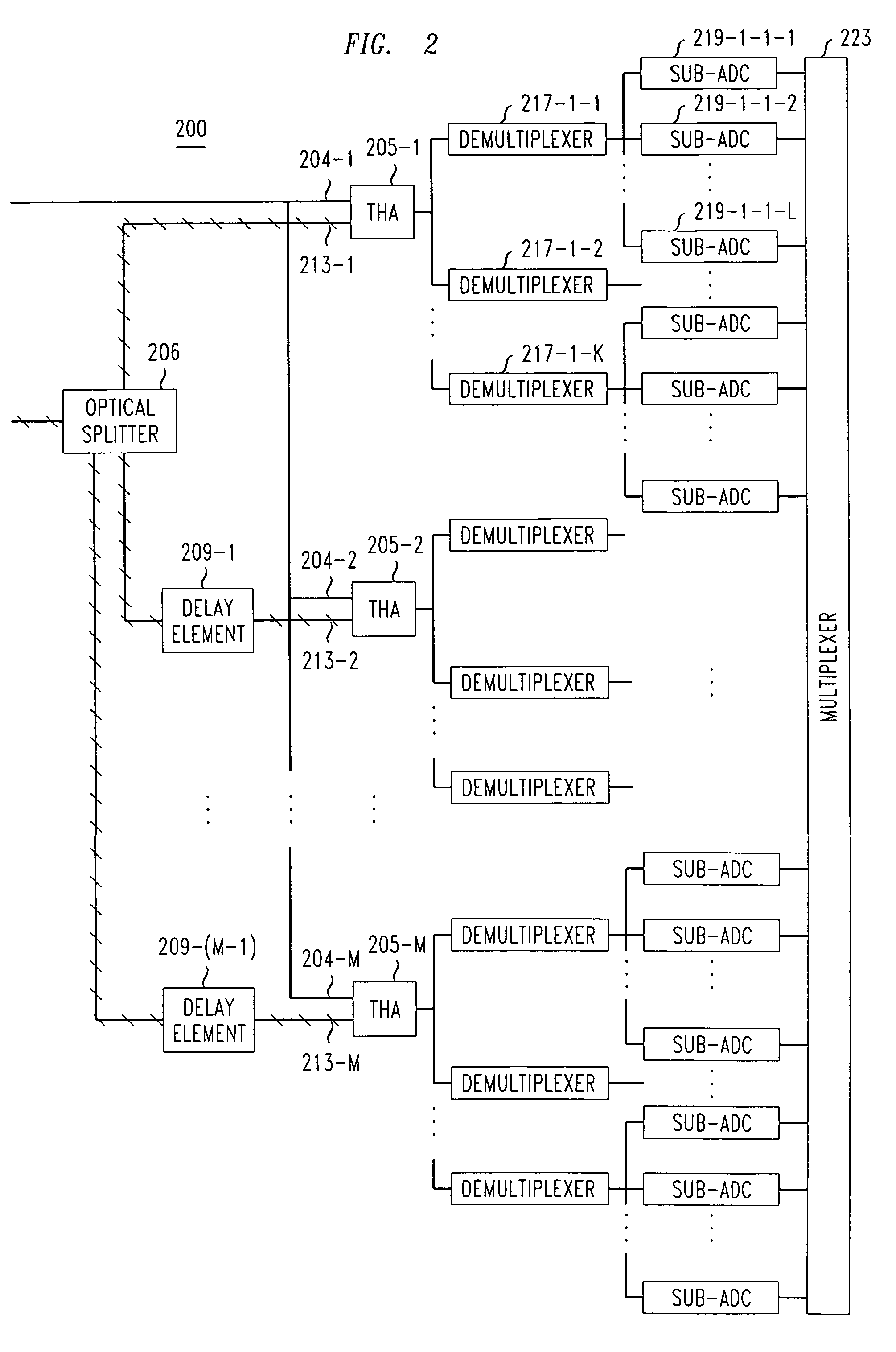Technique for photonic analog-to-digital signal conversion
a technology of analog-to-digital signal and photonics, applied in analogue/digital conversion, transmission systems, instruments, etc., can solve the problems of affecting the accuracy of tracking by a tha, increasing with sampling rate, corrupting the performance of adc b>100/b>, etc., and achieving the effect of reducing sampling jitter
- Summary
- Abstract
- Description
- Claims
- Application Information
AI Technical Summary
Benefits of technology
Problems solved by technology
Method used
Image
Examples
Embodiment Construction
[0014]FIG. 2 is a block diagram which illustrates photonic ADC 200 embodying the principles of the invention. Unlike ADC 100, photonic ADC 200 employs multiple opto-electric track and hold amplifiers (THAs) to perform time-interleaved photonic sampling in accordance with the invention. To that end, an analog signal (e.g., from analog signal source 103) to be digitized by ADC 200 is fed via electric waveguides 204-1, 204-2, . . . , 204-M to M different opto-electric THAs, denoted 205-1, 205-2, . . . , 205-M, respectively, where M>1. Because of use of the M THAs in accordance with the invention, the sampling rate required of each THA here is fs / M Hz, as opposed to the fs Hz sampling rate of THA 105 in ADC 100. As a result, ADC 200 here is subject to significantly less sampling jitter, compared with ADC 100.
[0015]An optical clock signal of a frequency fs / M Hz from an external source (e.g., from MLL driven by an Rf oscillator of the corresponding frequency) is provided to ADC 200 for ac...
PUM
 Login to View More
Login to View More Abstract
Description
Claims
Application Information
 Login to View More
Login to View More - R&D
- Intellectual Property
- Life Sciences
- Materials
- Tech Scout
- Unparalleled Data Quality
- Higher Quality Content
- 60% Fewer Hallucinations
Browse by: Latest US Patents, China's latest patents, Technical Efficacy Thesaurus, Application Domain, Technology Topic, Popular Technical Reports.
© 2025 PatSnap. All rights reserved.Legal|Privacy policy|Modern Slavery Act Transparency Statement|Sitemap|About US| Contact US: help@patsnap.com



